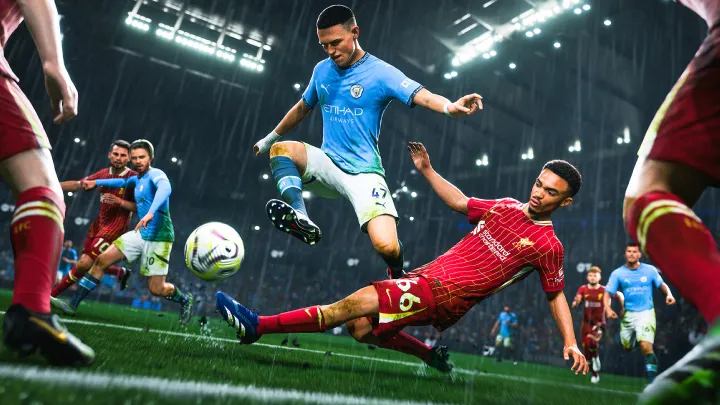EA Sports FC 25 is the latest installment in the long-running football simulation franchise, offering realistic gameplay, advanced tactics, and immersive football management experiences. The game combines player control, team management, and strategic decision-making in fast-paced matches and career modes. While it is accessible for beginners, mastering EA Sports FC 25 requires understanding player mechanics, tactical setups, set pieces, skill moves, and match strategies.
This guide provides a detailed step-by-step approach to mastering EA Sports FC 25. It covers player selection, training, skill moves, team tactics, match strategies, career mode management, online play, and advanced techniques for consistent success. Following this guide will help you dominate matches, improve your skills, and enjoy every aspect of the game.
Understanding the Game Mechanics

The first step to mastery is understanding core game mechanics. Player movement, ball control, passing, shooting, and defending all respond to realistic physics and require precision. Each player has unique attributes such as speed, stamina, strength, and technical skills that influence performance on the pitch.
Passing and ball control are essential foundations. Accurate passing, through balls, and first touches determine the fluidity of your play. Learning how to anticipate movement and position players optimally improves overall team performance.
Defending requires timing and anticipation. Tackling, jockeying, and intercepting passes must be precise to prevent goals while avoiding fouls. Combining defensive skills with proper positioning and player selection is critical for consistent success.
Choosing Your Team and Player Setup
Selecting the right team is crucial, whether playing in career mode or online matches. Each team offers unique strengths, formations, and star players. Consider team chemistry, player attributes, and your preferred style of play.
Player positioning affects overall performance. Assign players to roles that match their strengths, such as placing fast wingers on the sides and strong central defenders in the back. Proper positioning maximizes effectiveness in both attack and defense.
Customizing squads through transfers and training allows long-term improvement. Scout young talents, upgrade key players, and balance the team to ensure competitiveness throughout seasons.
Mastering Basic Controls and Player Skills
Familiarity with basic controls is essential. Passing, shooting, dribbling, and defending must be executed smoothly under pressure. Practice in training mode to build muscle memory and precision.
Skill moves such as stepovers, body feints, and ball rolls provide advantages during one-on-one situations. Learn to combine skill moves with dribbling and positioning to outmaneuver opponents effectively.
Goalkeeping is equally important. Controlling goalkeepers during crucial moments and understanding positioning improves defensive reliability and reduces conceded goals.
Advanced Dribbling and Attack Strategies

Advanced dribbling techniques allow players to create space, maintain possession, and break defensive lines. Techniques such as close control, directional changes, and feints help evade defenders.
Attack strategies include exploiting wings, switching play, and using quick passes to penetrate defensive lines. Timing runs and through balls maximize scoring opportunities. Understanding opponent weaknesses and adapting tactics mid-game is key for success.
Combining dribbling with precise shooting ensures higher goal conversion rates. Practice shooting from different angles, distances, and under pressure to increase efficiency in matches.
Defensive Tactics and Game Management
Strong defensive skills are as important as attacking prowess. Tactical positioning, pressing, and intercepting passes disrupt opponent play and maintain control of the match.
Player switching and marking are critical. Manual player control allows precise tackles and coverage, while automated systems handle less critical moments. Properly managing defenders and midfielders ensures stability and reduces scoring chances for the opponent.
Game management includes controlling tempo, preserving stamina, and adapting to scorelines. Slowing down play after gaining a lead or pressing aggressively to equalize requires strategic awareness.
Set Pieces and Special Situations
Mastering free kicks, corners, and penalties is crucial for scoring opportunities. Each set piece has specific mechanics, such as aiming, power, and curve. Practice in training mode to improve accuracy.
Understanding player positioning during set pieces improves chances of scoring and defending. Assign taller or stronger players for aerial challenges and use movement strategies to confuse opponents.
Penalty management requires mental focus. Predicting goalkeeper tendencies and controlling shot placement enhances success rates. Consistent practice in set piece scenarios contributes to match-winning moments.
Career Mode and Long-Term Team Development
Career mode allows players to manage teams over multiple seasons. This includes transfers, player development, and tactical adjustments. Long-term success requires balancing short-term victories with future team growth.
Training players improves attributes, unlocks skills, and ensures competitiveness. Monitor player performance and assign targeted training sessions based on strengths and weaknesses.
Transfer strategies are essential. Scout potential talents, negotiate contracts, and manage finances to maintain a strong squad. Building depth in every position prevents vulnerabilities during congested schedules.
Online Play and Competitive Strategies
Online play introduces dynamic opponents with varying styles and skill levels. Observing opponent patterns, reacting quickly, and adapting strategies are crucial.
Positioning, skill usage, and tactical adjustments differentiate casual play from competitive success. Online matches require awareness of momentum, timing, and decision-making under pressure.
Communication in team-based online modes enhances performance. Coordinated passing, defensive coverage, and offensive strategies provide a competitive edge against skilled opponents.
Advanced Techniques and Tournament Preparation
Tournament play and competitive leagues demand mastery of all mechanics. Advanced techniques include skill chaining, precise player positioning, and adaptive tactics for different opponents.
Preparation involves studying opponent tendencies, optimizing formations, and practicing high-pressure scenarios. Anticipating opponent decisions allows effective counter-strategies.
Consistent practice, strategic planning, and continuous improvement ensure dominance in tournaments. Players who refine all aspects of their gameplay, from dribbling to tactical awareness, excel at the highest competitive levels.
Conclusion
EA Sports FC 25 is a comprehensive football simulation that rewards skill, strategy, and tactical awareness. Mastery requires understanding gameplay mechanics, player control, team management, advanced dribbling, defending, set pieces, career progression, and competitive strategies. Following this guide equips players to dominate matches, excel in online play, and enjoy the full depth of EA Sports FC 25.
Summary
Complete how to guide for EA Sports FC 25 covering gameplay, tactics, skill moves, set pieces, career mode, online play, defense, and tournament strategies.

















